
Six pieces developed by violinists Johnny Chang and Keir GoGwilt, with vocalist Celeste Oram joining on three, starting with early music works by Hildegard van Bingen and Orlando de Lassus in a hybrid of musical archaeology informed by modern concepts of repetition, variations of timbre, improvisation, &c, as they seek hidden sound worlds in older notation.
Out of Stock
Quantity in Basket: None
Log In to use our Wish List
Shipping Weight: 3.00 units
Sample The Album:
Johnny Chang-violin
Keir GoGwilt-violin
Celeste Oram-voice
Click an artist name above to see in-stock items for that artist.
Label: Another Timbre
Catalog ID: at191
Squidco Product Code: 32030
Format: CD
Condition: New
Released: 2022
Country: UK
Packaging: Cardboard Gatefold
Recorded at MacLaurin Chapel Auckland / T maki Makaurau, New Zealand Aotearoa, in July 2021
Another Timbre Interview with Keir GoGwilt
How - and where - did your collaboration with each other come about?
KG: I spent a year in Auckland/Tāmaki Makaurau with my partner, Celeste (who sings on this album), from September 2021 to August 2022. Johnny had also just moved back to Aotearoa New Zealand from Berlin - we connected and started meeting up every week to play together. Our first session was in Johnny's backyard in Orewa; we kept shaping the material through some presentations at the Audio Foundation, Auckland University, the Pyramid Club (together with taonga puoro musician Rob Thorne), and MacLaurin chapel (joined by Celeste and Blake Scanlen).
JC: My collaboration with Keir coincides with two instances of 'coming around'. First, my return to New Zealand after living in Los Angeles and Berlin between 2000 and 2019. Secondly, re-centring my musical focus on the violin after a long period of distancing and building my listening around the viola. I am grateful to Keir for inspiring me to renew the connection to my first instrument with a stronger body and more open ears.
Why did you decide to ground your collaborative project in early music, and why Lassus and Hildegard?
KG: I'm drawn to working with early music because it turns the act of composition into a sort of musical archaeology. That is, we were both interested in really experiencing the world of these historical pieces in as textured a way as we could. Given our musical practices, this meant using the tools available to us: repetition, variations of timbre, the extension of measured sequences into unmeasured fantasies. Being creative with the music - or rather filtering it through our own idiomatic sensibilities - made it more vivid for us.
Johnny and I began playing de Lassus' two-part motets for the simple reason that I found them while looking through sheet music downloaded on my tablet. I think Celeste had been singing them with friends in San Diego, outside in the park, at the outset of the pandemic. Reading through these pieces quite loosely and improvisationally, we began to tease them apart, repeating sequences in contrary motion, losing ourselves in ornamental meanderings, or expanding dissonant phrases to prolong our enjoyment of their inexorable cadences. As though these gestural, quasi-melismatic features were buried in de Lassus' own historical memory all along.
JC: A few years ago I was introduced to the idea of hearing the music of Hildegard von Bingen alongside modern music by German singer Irene Kurka, an active performer of contemporary and experimental music. The sense of space inherent in Hildegard's music drew me in with many questions and inviting concepts. Additionally, I identify fully with the notion of musical archaeology as an analogy for unearthing potential soundworlds embedded within each score.
Are each of the pieces composed by one of you, or is there an element of collaboration in the process of composition?
KG: I would say all the pieces on this CD are collaborative, though the creative labour might be skewed one way or the other. And by creative labour I mean the work of making decisions and parameters, whether notated or verbally affirmed and re-affirmed. For example, the first track, 'hope to adjust', came about through several improvisations, which I borrowed from as I wrote down some provisional notations.
In some of the tracks, like 'beatific creatures' or 'who follows me', we play excerpts of di Lasso's motets pretty much as written, but with a sense that we were waiting for the other person to move first, creating a sense of suspended, rather than directed time.
One of the reasons I feel a sense of artistic kinship with Johnny is that in any given situation we both like to leave as many things open as possible. Often that's a difficult and maybe even dangerous proposition, given that it leaves the door open to failure and misunderstanding. I think the title 'hope to adjust' signals that we can all aspire to come out better for these unexpected contingencies.
JC: For me the most important aspect coming out of the collaboration with Keir is sharing a similar mode of uncertainty. We were able to quickly develop a sense of trust in each other in order to bring out the positive aspects of this openness and 'not-knowing'.

The Squid's Ear!
Artist Biographies
• Show Bio for Johnny Chang "Berlin-based composer-performer Johnny Chang engages in extended explorations surrounding the relationships of sound/silence and the in-between areas of improvisation, composition, performance and listening. Current collaborations/projects include: Antoine Beuger, Alessandro Bossetti, Lucio Capece, Olivier Di Placido, Jürg Frey, Chris Heenan, Christian Kesten, Annette Krebs, Luke Munn, Koen Nutters, Michael Pisaro, Derek Shirley." ^ Hide Bio for Johnny Chang • Show Bio for Keir GoGwilt "Keir GoGwilt is a violinist, scholar, and poet, whose work spans a range of genres and disciplines. His creative work often reflects his scholarship, which follows performers' historical writings on music, phenomenology, and pedagogies of improvisation. He is at home in collaborative, often interdisciplinary work, in which creative labor is shared and recognized. As a violinist he has been described as a "formidable performer" (New York Times) noted for his "evocative sound" (London Jazz News) and "finger-busting virtuosity" (San Diego Union Tribune). He has soloed with groups including the Orchestra of St. Luke's, the Chinese National Symphony, the Orquesta Filarmonica de Santiago, the Bowdoin International Music Festival Orchestra, the Boston Modern Orchestra Project, the Chicago Civic Orchestra, the Manhattan School of Music Chamber Sinfonia, and the La Jolla Symphony. He is a core member of the American Modern Opera Company, a collective of dancers, instrumentalists, composers, writers, and singers, committed to the long-term creation and performance of an original music- and dance-theater repertory. His duet with dancer Bobbi Jene Smith, "A Study on Effort," has been featured at the Luminato Festival, PS 122's COIL Festival, the ODC Theater, UCSD Dance&Theater, the American Repertory Theater, and Carolina Performing Arts. Their quartet with dancer Or Schraiber and violinist Miranda Cuckson, "With Care," investigates the politics of empathy and apathy on the level of individual relationships. He is part of the cast and creative team for Bobbi Jene's acclaimed show, "Lost Mountain," premiered at La Mama in May 2019. Long-time collaborators include composers Matthew Aucoin, Celeste Oram, and Carolyn Chen. Aucoin has written numerous pieces for him, including "Poem" and "Its Own Accord." They perform together frequently, and have appeared at the Spoleto Festival in Italy, Rockport Chamber Music, Music Academy of the West, the LA Opera, Dumbarton Oaks, the San Diego Symphony's "Hearing the Future" festival, among others. GoGwilt's debut solo CD, re: d, includes music by Johann Paul von Westhoff and Carolyn Chen. The CD and its live performance-installation features artwork by Audrey Hope and poetry by Christopher and Keir GoGwilt. He has worked with Celeste Oram in her explorative broadcasts on technological media, "Televisionmann," and "Vera Wyse Munro: A Radio Séance." He is also part of the creative team for Oram's 3-hour show, "Tautitotito: An Alternative Genealogy of Aotearoa New Zealand Music" (commissioned by and premiered at the Darmstadt Summer Courses 2018). GoGwilt regularly performs with other San Diego musicians including Steven Schick, Mark Dresser (as part of the Dresser quintet/septet), and bassist/improviser Kyle Motl (as part of their duo, Treesearch). He can be heard on records released by Tzadik, Clean Feed, and BMOP (upcoming). He has additionally performed with musicians including Tan Dun, Chance the Rapper, Robert Levin, and singer-songwriter Asaf Avidan." ^ Hide Bio for Keir GoGwilt • Show Bio for Celeste Oram "Celeste Oram (b. 1990) is a New Zealand composer who was born in Manhattan, learned to walk and talk in London, grew up in Auckland, and is presently based in Southern California. Celeste's scored works investigate new media and strategies for musical notation: namely, video and audio scores. These works have been performed and recorded by ensembles including the Callithumpian Consort (Boston), wasteLAnd (Los Angeles), the Karlheinz Company (Auckland), the Intrepid Music Project (Auckland), and Three Shades Black (Melbourne), and presented at festivals including SICPP at the New England Conservatory, the soundSCAPE festival in Maccagno, Italy, and the Melbourne Fringe Festival. Older works for standard forces and notation have been performed and recorded by the New Zealand Symphony Orchestra, Auckland Philharmonia Orchestra, and the Song Company (Sydney). Celeste was the Auckland Philharmonia's 'Rising Star' young composer-in-residence for 2013-14; her commissioned orchestral work macropsia was selected as a finalist in the 2014 SOUNZ Contemporary Award for excellence in New Zealand contemporary composition. Another avenue of work is non-instrumental performance with audio and visual media; Celeste performed her solo piece O I at the 2016 Darmstadt Summer Courses for New Music in Germany and was awarded the Kranichstein Prize for composition. A third ongoing project is the renovation of histories of New Zealand music and sonic cultures. At present, this revolves around research into early 20th-century ham radio activity, and the figure of Vera Wyse Munro (1897-1966). This project is rapidly snowballing into an obsession with building re-creations of early radio circuits. Celeste is currently pursuing a PhD in music composition at the University of California San Diego, where she completed an MA in 2016. She completed a BMusBA with first-class Honours at the University of Auckland in 2012, studying with Eve de Castro-Robinson, John Elmsly, and Leonie Holmes." ^ Hide Bio for Celeste Oram
11/20/2024
Have a better biography or biography source? Please Contact Us so that we can update this biography.
11/20/2024
Have a better biography or biography source? Please Contact Us so that we can update this biography.
11/20/2024
Have a better biography or biography source? Please Contact Us so that we can update this biography.
Track Listing:
1. Hope To Adjust 09:24
2. Cantigas: Hildegard 10:11
3. Beatific Creatures 07:37
4. Interlude 18:05
5. Who Follows Me 11:20
6. Hildegard Resonances 18:04
Compositional Forms
Stringed Instruments
Unusual Vocal Forms
Trio Recordings
Australian Improvisers, Composers and Experimenters
New in Compositional Music
Recent Releases and Best Sellers
Search for other titles on the label:
Another Timbre.

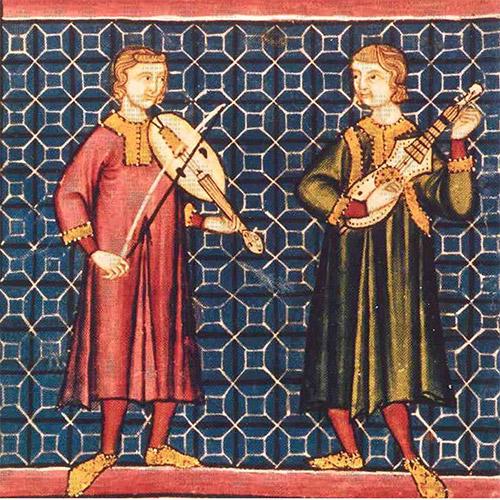




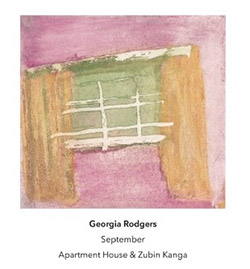

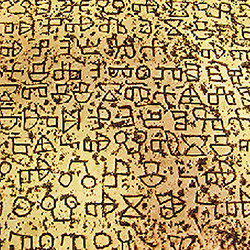

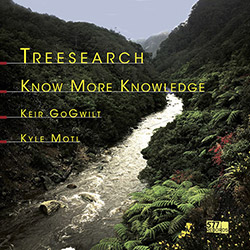
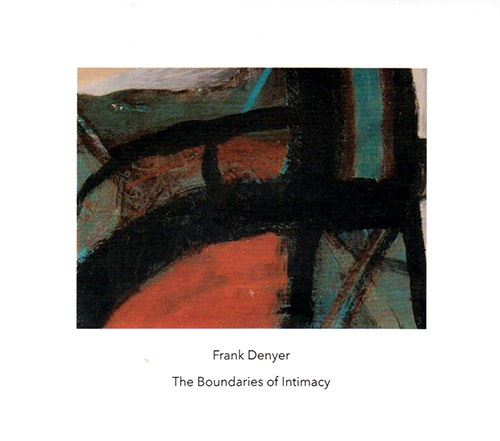
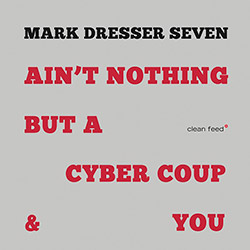

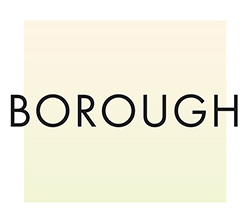
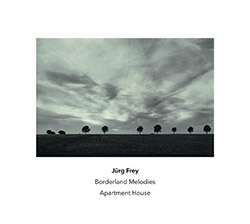


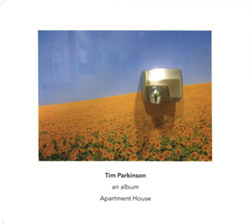

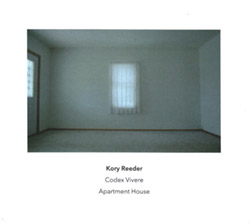
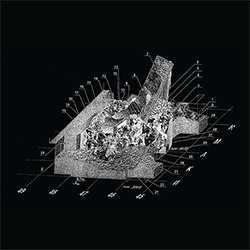


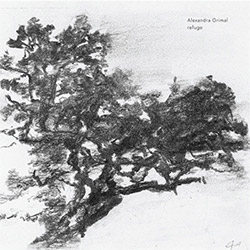

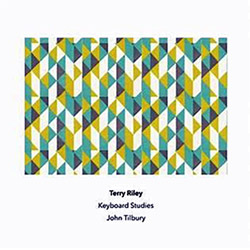


![Guy, Barry / Ken Vandermark: Occasional Poems [2 CDs]](https://www.teuthida.com/productImages/misc4/34849.jpg)
![Novoa / Carter / Mela Trio: Vol.1 [VINYL]](https://www.teuthida.com/productImages/misc4/35236.jpg)


![Elephant9 : Mythical River [VINYL]](https://www.teuthida.com/productImages/misc4/34624.jpg)
![Evans, Peter (Evans / Eldh / Black): Extra [VINYL]](https://www.teuthida.com/productImages/misc4/35279.jpg)

![McPhee, Joe: Straight Up, Without Wings [BOOK]](https://www.teuthida.com/productImages/misc4/35454.jpg)
![Jeck, Philip: rpm [2 CDs]](https://www.teuthida.com/productImages/misc4/35455.jpg)













![Barker / Parker / Irabagon: Bakunawa [VINYL]](https://www.teuthida.com/productImages/misc4/35533.jpg)
![Blaser, Samuel / Marc Ducret / Peter Bruun: Dark Was The Night, Cold Was The Ground [VINYL 10-inch]](https://www.teuthida.com/productImages/misc4/35492.jpg)








![Warren, Kenny (Warren / Hoffman / Ellman): Sweet World [VINYL]](https://www.teuthida.com/productImages/misc4/35451.jpg)




![Blake, Ran / Dave Knife Fabris: Live Amsterdam 2006, First Visit [CD + POSTCARDS]](https://www.teuthida.com/productImages/misc4/35275.jpg)













![DNS: Taking Big Bites Of The Khandas Three Cafes Deep [2 CDs]](https://www.teuthida.com/productImages/misc4/35334.jpg)




![Cleaver, Gerald: The Process [VINYL]](https://www.teuthida.com/productImages/misc4/34966.jpg)




![Alva Noto: HYbr:ID II [VINYL 2 LPs]](https://www.teuthida.com/productImages/misc4/35201.jpg)

![Baron, Derek / Luke Martin: Distinct and Concealed [CASSETTE + DOWNLOAD]](https://www.teuthida.com/productImages/misc4/35079.jpg)

![Lyle, Erica Dawn : Colonial Motels [CASSETTE + DOWNLOAD]](https://www.teuthida.com/productImages/misc4/35080.jpg)









![Sanna, Claudio: Compositori Sardi Contemporanei II [2 CDs]](https://www.teuthida.com/productImages/misc4/35317.jpg)







![Zurria, Manuel: Fame di Vento [3 CDs]](https://www.teuthida.com/productImages/misc4/35167.jpg)

![Granberg, Magnus / Nattens Inbrott / Skogen: Holde Traume, Kehret Wieder! [2 CDs]](https://www.teuthida.com/productImages/misc4/35038.jpg)
![Frey, Jurg: Outermost Melodie [2 CDs]](https://www.teuthida.com/productImages/misc4/35039.jpg)

![Pavone, Jessica: Reverse Bloom [VINYL]](https://www.teuthida.com/productImages/misc4/34895.jpg)




![Modney (Modney / Wooley / Gentile / Roberts / Pluta / Symthe / ...): Ascending Primes [2 CDs]](https://www.teuthida.com/productImages/misc4/34852.jpg)









![Elephant9 with Terje Rypdal: Catching Fire [VINYL 2 LPs]](https://www.teuthida.com/productImages/misc4/35355.jpg)
![Deerlady (Obomsawin, Mali / Magdalena Abrego): Greatest Hits [VINYL]](https://www.teuthida.com/productImages/misc4/34876.jpg)




![Haino, Keiji: Black Blues [2 CDs]](https://www.teuthida.com/productImages/misc4/35109.jpg)



![Surplus 1980: Illusion of Consistency [CD]](https://www.teuthida.com/productImages/misc4/35069.jpg)
![Staiano, Moe: Away Towards the Light [VINYL + DOWNLOAD]](https://www.teuthida.com/productImages/misc4/35037.jpg)



![Caveira (Gomes / Sousa / Abras / Ferrandini): Ficar Vivo [VINYL]](https://www.teuthida.com/productImages/misc4/34643.jpg)
![Gregg, J. J. / David Van Auken: Lunar Prairie [CD w/ DOWNLOAD]](https://www.teuthida.com/productImages/misc4/34611.jpg)

![Coultrain: Mundus [VINYL]](https://www.teuthida.com/productImages/misc4/32439.jpg)
![Mattin: Songbook #6 [VINYL]](https://www.teuthida.com/productImages/misc4/27317.jpg)
![Punkappella: Wake Up [7-inch VINYL]](https://www.teuthida.com/productImages/misc4/17519.jpg)
![Residents, The: WARNING: UNiNC.: Live And Experimental Recordings 1971-1972 [VINYL 2 LPs]](https://www.teuthida.com/productImages/misc4/31521.jpg)
![Coultrain: Phantasmagoria [VINYL]](https://www.teuthida.com/productImages/misc4/30142.jpg)
![Lennon, Sean Ono: Asterisms [VINYL]](https://www.teuthida.com/productImages/misc4/34517.jpg)

![Coley, Byron: Dating Tips for Touring Bands [VINYL]](https://www.teuthida.com/productImages/misc4/17906.jpg)

![Lost Kisses: My Life is Sad & Funny [DVD]](https://www.teuthida.com/productImages/misc4/lostKissesDVD.jpg)